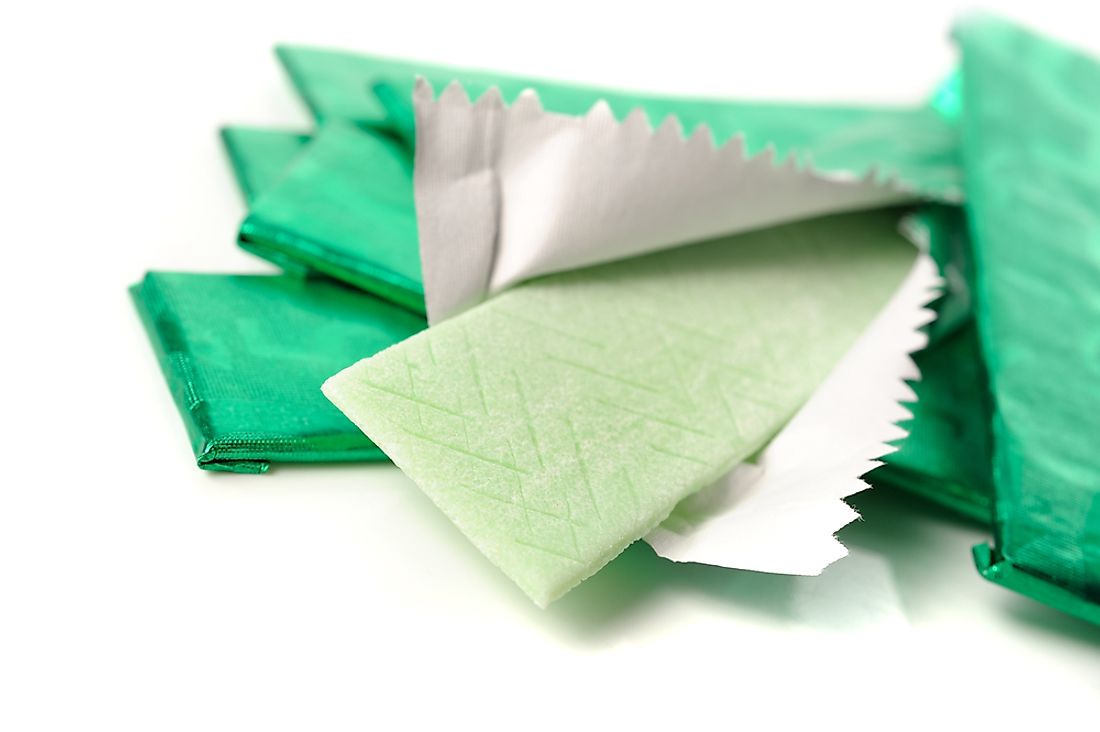How Old Is Chewing Gum?

Chewing gum has a very long history, dating back to 9,000 years ago. The oldest chewing gum found, a lump of bark tar with well-defined tooth prints, dates back to 5,000 years ago. In the ancient days the Greeks chewed mastiche whereas Eskimos chewed blubber, South Americans chewed coca leaves, early US settlers chewed tobacco leaves, Native Americans chewed sugar pine, and the Mayan Indians chewed chicle. Chicle is a latex sap derived from a native Central American tree called sapodilla. It is a form of rubber that many people chewed before the World War II. The early chewers sought gum due to the desire to nibble, clean their teeth, or enjoy fresh breath. In the early days, most of the chewing gum occurred naturally. However, with the increase in demand for chewing gum after World War II, chemists began searching for an alternative ingredient to use in preparation of gum.
Origin of the Modern Chewing Gum
Modern chewing gum was first commercialized in the United States. John B. Curtis picked up on the Native American practice of chewing gum made from sprucetree sap and developed The State of Maine Pure Spruce Gum first sold in 1848. It's popularity was soon overridden by gum made from paraffin wax, a petroleum product. These early gums were not sweet however, and chewers would repeatedly dip the gum in powdered sugar to get the desired sweetness. The first flavored chewing gum was an invention of John Colgan in the 1860s. Colgan was a pharmacist located in Louisville, Kentucky. He made chewing gum by mixing powdered sugar and the tolu flavor. Later on, he spearheaded the manufacturing and packaging of chickle-based gum. The first patent on chewing gum was made by dentist William Semple on December 28, 1869.
Chicle, intended to be used as rubber, ended up being an ingredient of the Adams New York Chewing Gum sold in 1871. The owner of the brand was Thomas Adams. In subsequent years, other chewing gum brands came into existence such as the Black Jack in 1884, Chiclets in 1899, and the popular Wrigley’s Spearmint Gum. These varieties of gum still exist to date.
Today, companies manufacture chewing gum by combining sugar, colors, sweeteners, gum base, flavorings, and a hard polyol coating. Softeners like glycerin or vegetable oil are added to the gum to make it moist. Interestingly, more than 1,000 different varieties of gum are manufactured and sold in the United States alone. Statistics indicate that children spend about half a billion dollars on gum!
Advantages of Chewing Gum
Chewing gum cleans one’s teeth. As one chews, the gum stimulates the production of saliva. Saliva in the mouth will neutralize the acids present. As a result, the teeth are less prone to tooth decay. One of the sweeteners in chewing gum called xylitol normally inhibits the Streptococcus mutans bacteria which is responsible for causing tooth decay. However, chewing gum cannot replace the importance of flossing and brushing the teeth.
Additionally, since chewing gum is a physical act, it keeps one alert and relaxed. It also minimizes a person’s appetite for snacks. Gum chewing also cures halitosis which is bad breath.
Another advantage of chewing gums is that the gum retains its quality for an extended period. In fact, unlike most products which are often labeled with expiry dates, most countries do not consider this a necessity when it comes to chewing gums. Chewing gums have a very low moisture content of about 3-6%. Besides, when it stays in a stable environment for long, it loses its flavor and becomes brittle. However, it rarely becomes unsafe for consumption.











